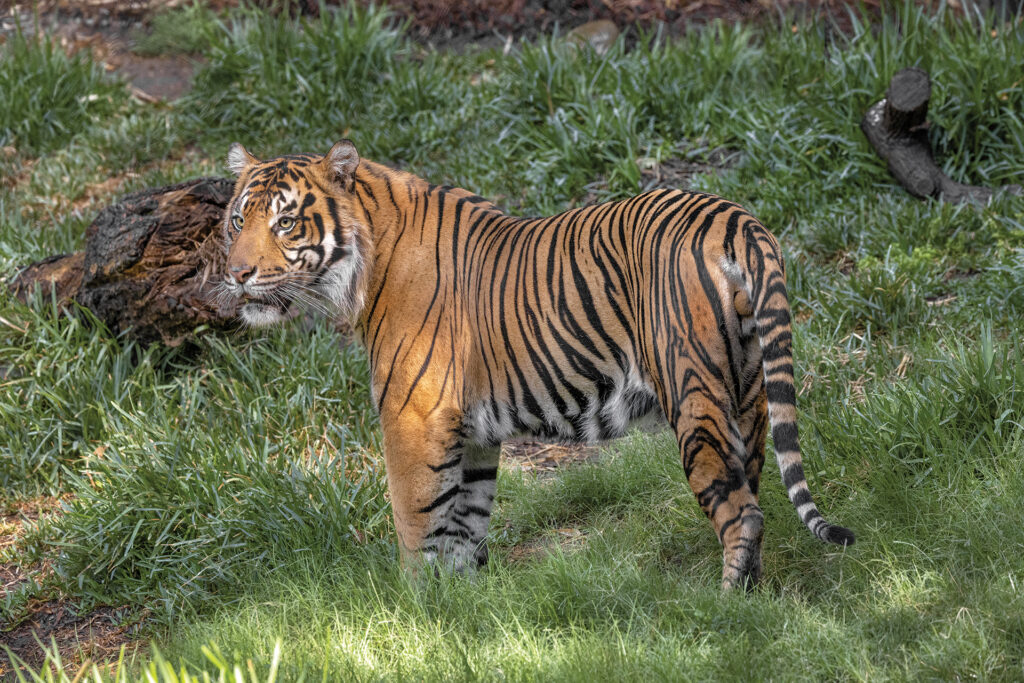
Postdoctoral Associate in Community Engagement for San Diego Zoo Wildlife Alliance
Reducing Wildlife Trafficking Through Changing Consumer Behavior
People have complicated relationships with wildlife. These relationships are characterized by complex interactions, including how people utilize wildlife. Some utilization is esoteric—the enjoyment of observing a sun bear at the San Diego Zoo, for example. Other wildlife utilization is practical, as when people use physical wildlife products such as bones or blood as medicine, food, or to meet other needs and wants. Every society utilizes wildlife practically. Consider, for example, the US consumption of salmon, venison, and lobster. What is undeniable is that some practical utilization of wildlife is placing global biodiversity, and global health, at extraordinary risk.
At San Diego Zoo Wildlife Alliance (SDZWA), we are working to reduce unsustainable, illegal, and dangerous practical utilization of wildlife. We focus these efforts in our Asian Rainforest Conservation Hub, specifically in mainland Southeast Asia. This area is a global biodiversity hotspot, and a hotspot for illegal and unsustainable wildlife trade.
Analyzing Motivations
What motivates people to use sun bear bile? What motivates people to use tiger bone glue? These are complex questions we cannot easily answer. People do many things without ever being able to fully articulate why they do them. As a species, we have a collective inability to articulate the role our culture, family, and physical context play on our behavior. For decades, anthropologists and other social scientists have been grappling with this tricky issue of behavioral motivation.
In my role at SDZWA, I use a diverse suite of tools from these disciplines—such as surveys, interviews, and observations—to investigate the specific motivations people have for consuming wildlife. By understanding these motivations, we can implement campaigns that leverage these motivations toward conservation-positive alternative behaviors.

For example, SDZWA’s conservation research in Cambodia showed women may be motivated to take bear bile as medicine to address potential illness after giving birth. Now that we know these women’s motivations are to care for their health after a traumatic event for their bodies, we can suggest alternatives that may be more effective, such as going to the doctor or the pharmacy for non-wildlife-based biomedical products. In addition, our research has shown that these women are motivated by the suggestions of their older female kin. We can encourage these older women to strengthen their influence over their younger female kin in alternative, conservation-positive ways—for example, by accompanying their younger kin to biomedical doctors.
Finding New Strategies
Shifting human behavior is undoubtedly challenging, but it has more potential for efficacy and impact than alternative strategies, such as funding more rangers in protected areas, or lobbying to strengthen existing laws. In fact, a plethora of evidence has shown that neither of these strategies have been effective in halting biodiversity decline in Southeast Asia.
Rugged, jungled landscapes prohibit easy surveillance by rangers, and poachers have easy access to the materials necessary for laying snare traps, making poaching easy to do across the region. It has been impossible for conservationists to address the insidious and persistent threat of poaching with ranger enforcement—it’s like trying to plug a bursting dam with a wine cork.

The Nam Et-Phou Louey National Park in northern Laos is one of the most well-enforced areas in Southeast Asia, and yet the last tigers in the entire country were recently poached there. Additionally, many countries across Southeast Asia already have strong legislation in place regarding the illegal consumption of wildlife; however, perpetrators are rarely if ever caught. While legislation can in some cases be important for encouraging a social norm against a practice, one need only look at the rampant illegal speeding on California highways to see clear evidence that legislation can sometimes have no effect on existing social norms.
Working Together for Change
Another important reason to focus on wildlife consumers is that it places people at the center of the conservation work we do. This is a core ethos of SDZWA. Our efforts to change behavior are fully founded on the insights, lived experiences, and needs of the people themselves. I have sat with women sewing in Cambodia as we chatted about the wildlife they used and the importance they placed upon it. In small, smoky mountain villages in Laos, I have heard from men who support their families with wildlife they hunt in the forest. In the cities of Vietnam, I have heard people tell me about the great importance their older kin place on animal bone glue for treating ailments.

With our data derived from these lived experiences and needs, my colleagues and I here at SDZWA and within Southeast Asia can critically reflect on and design strategies that balance the needs of local communities with the global need for secured biodiversity and a reduction in dangerous human-wildlife interactions.
Tomorrow Starts Today
Currently, we are focusing our efforts on reducing unsustainable and illegal bear bile use in Vietnam. In 2020, we completed a countrywide survey of bear bile use, and found that in our primary study site in Vietnam, over 20 percent of people use bear bile for medicinal and social purposes. This represents a significant threat to beleaguered bear species in the country.
In early March of this year, results of our survey guided us as we conducted a planning workshop with Vietnamese scientists, government officials, bear hunters, and wildlife traders. The aim of the workshop was to elicit community feedback and insights around a plan for a bear bile demand reduction campaign. While challenges exist in that conservation-positive alternatives such as biomedicine are not highly trusted in Vietnam, our collective, community-focused workshop discussions have illuminated other viable strategies, grounded in Vietnamese heritage and kin networks, to reduce bear bile consumption.

Photo credit | Erica Hurley, Free the Bears
Later this year, we will implement a demand reduction campaign, and next year we will evaluate the campaign to see if it had an effect on reducing demand for bear bile. If it does, we can infer that lower demand for bear bile led to less hunting of bears to supply the demand, and we can additionally infer that Vietnamese bear populations can begin to stabilize and, ideally, increase. This planned outcome of our human-focused work shows that while our strategies may be focused on people, our ultimate outcome is always to ensure we live in a world where all life thrives.




